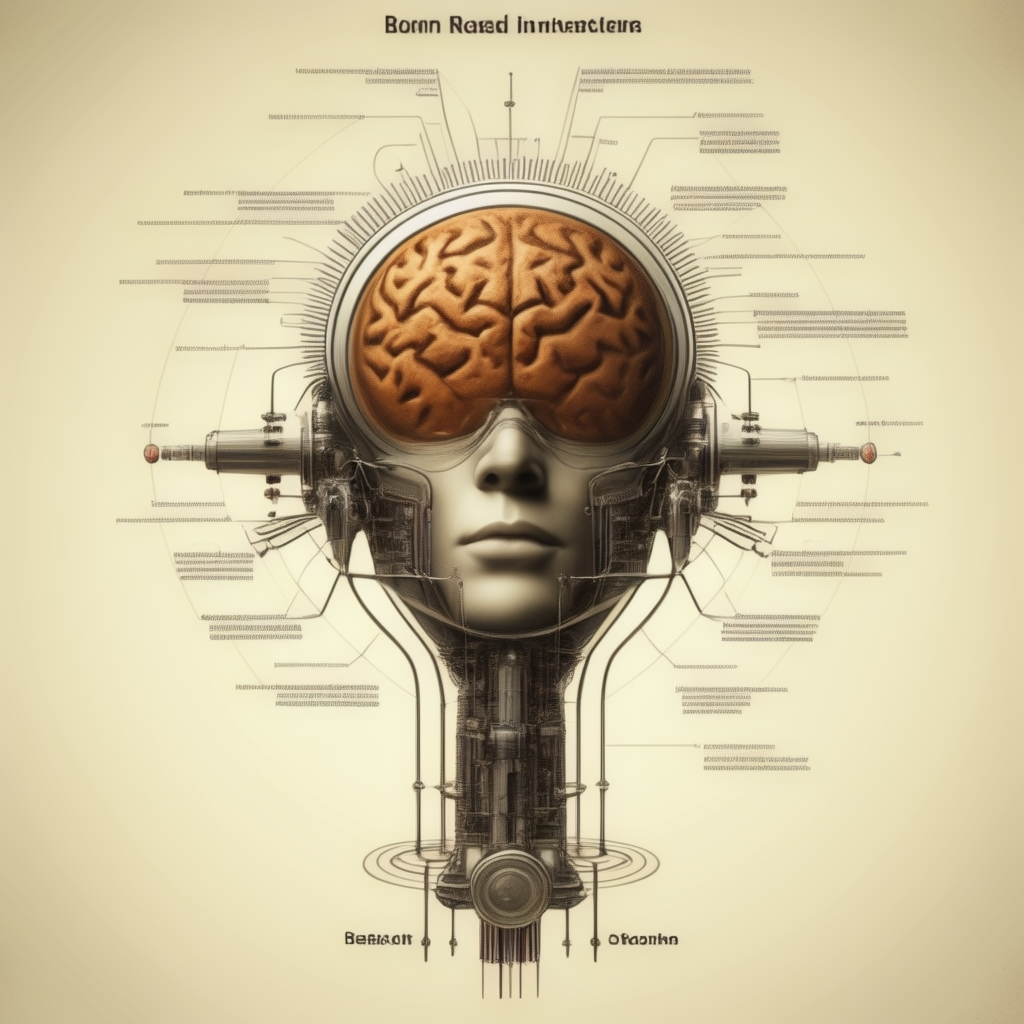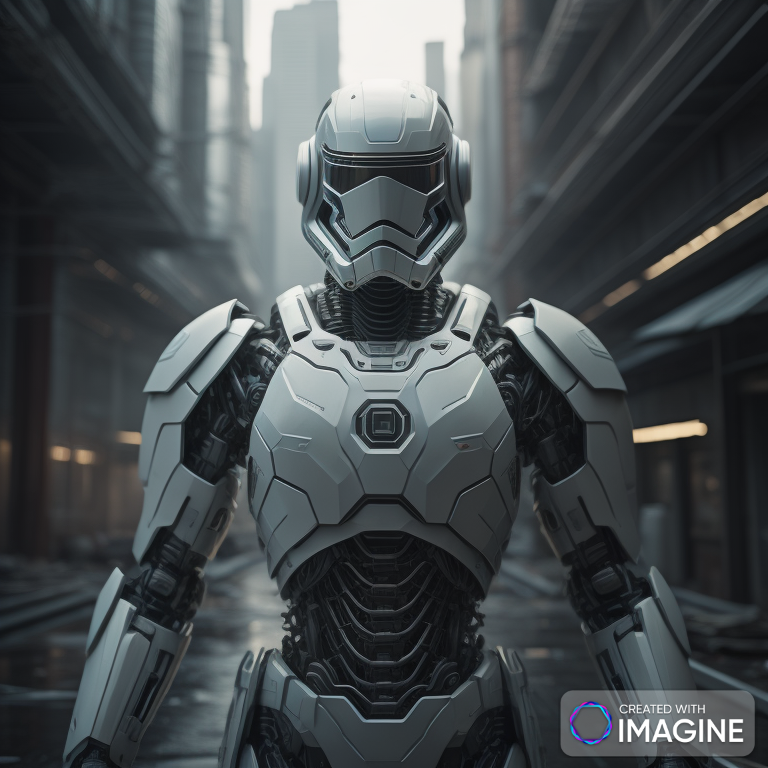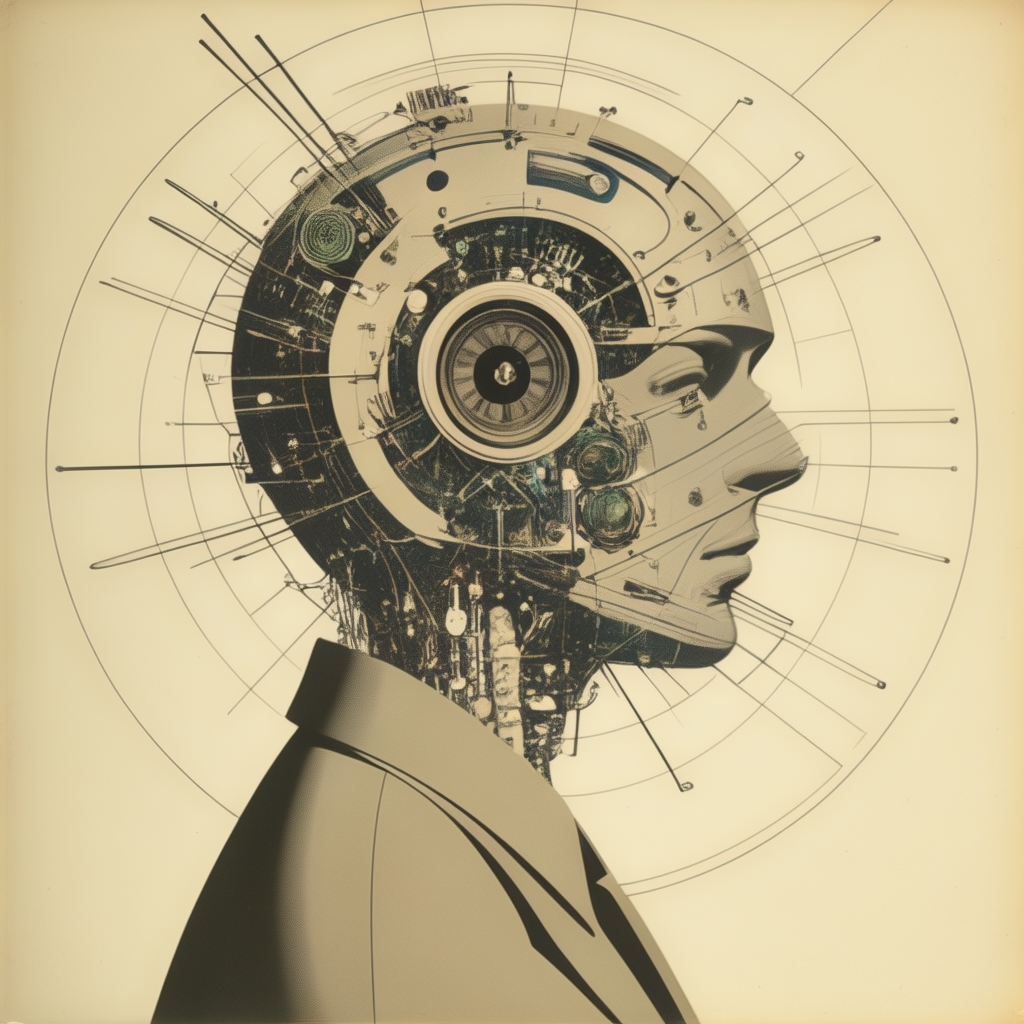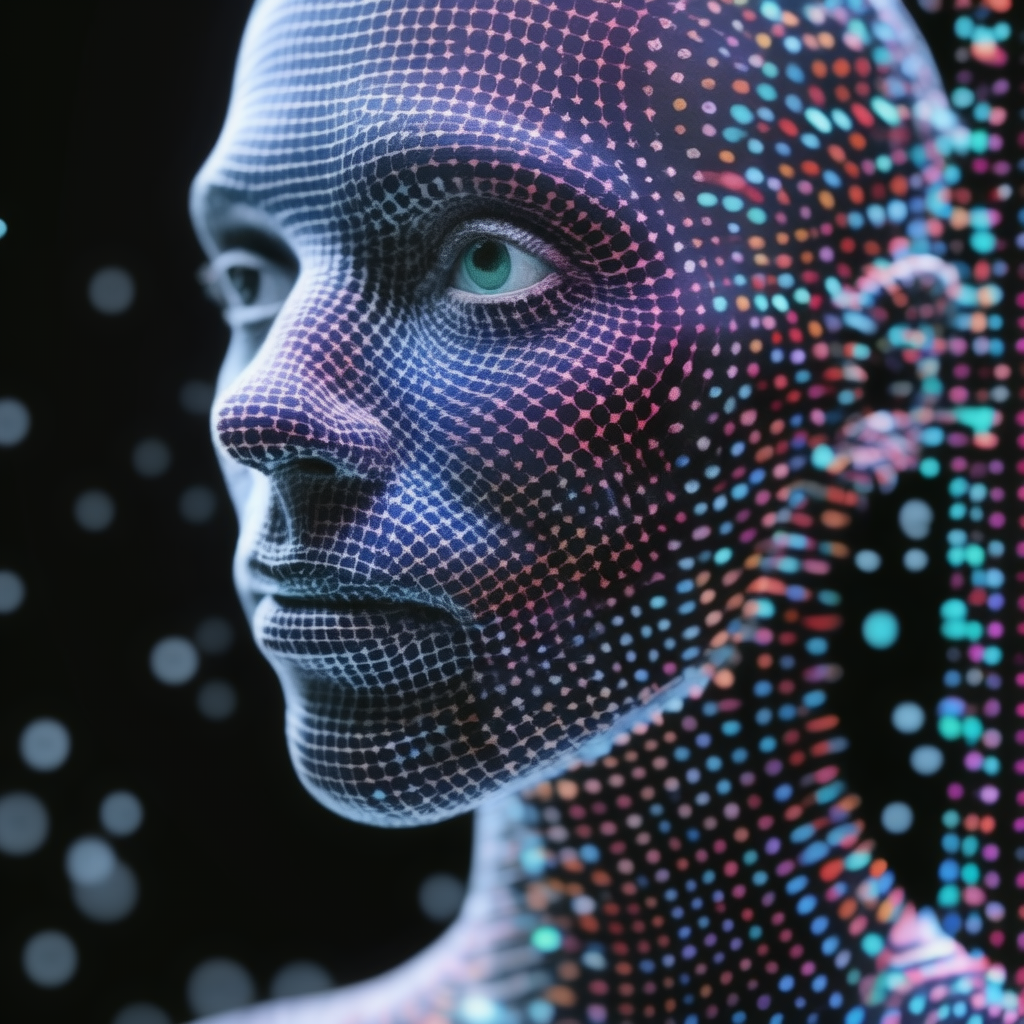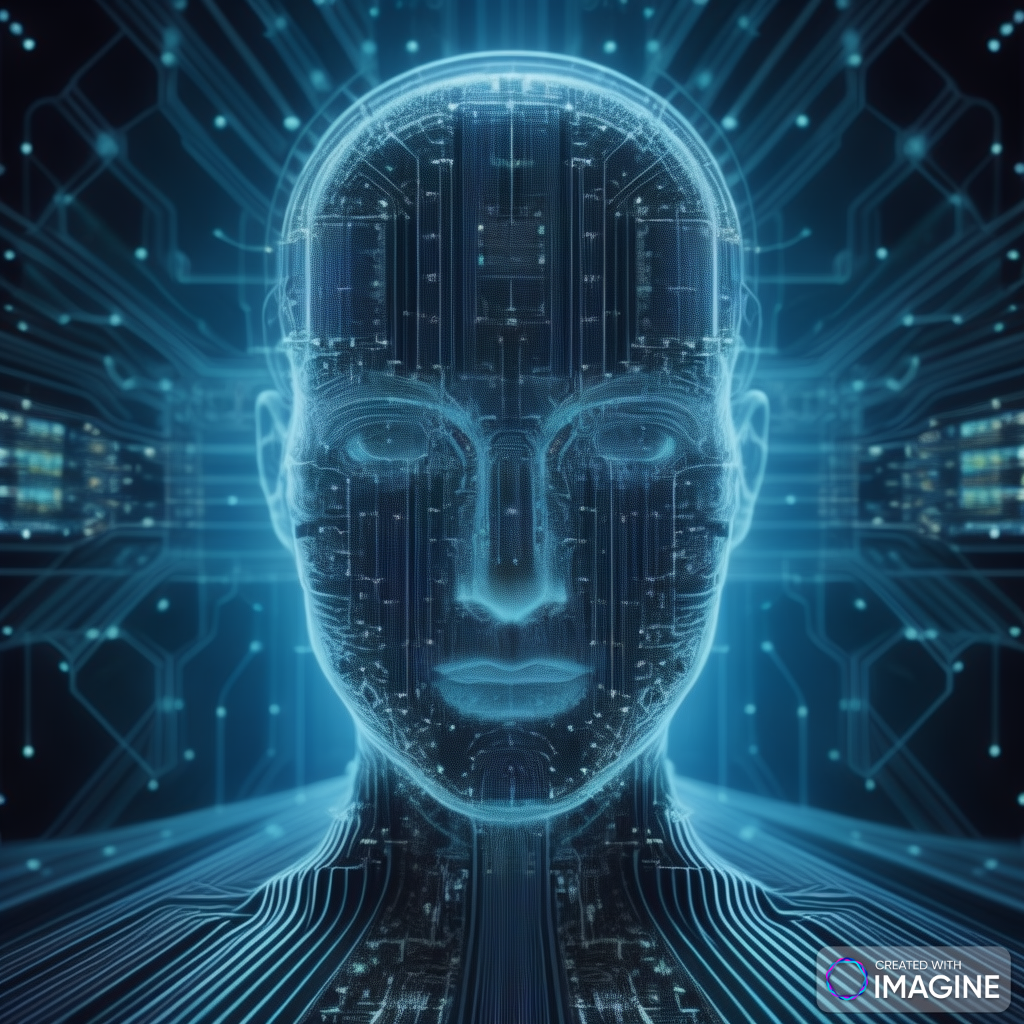Introduction: The Foundation of Rational Agents in AI
Artificial Intelligence (AI) fundamentally revolves around the concept of building intelligent agents—systems that can perceive their environment and take actions to achieve specific goals. At the core of this concept is the rational agent, which makes decisions based on available information (or percepts) and chooses actions that maximize the likelihood of achieving its goals.
In AI, the ultimate challenge is designing an agent program that implements the agent function: a mapping from percepts (inputs from the environment) to actions (outputs or responses). This agent program must operate within the framework of an architecture—the underlying hardware (physical sensors and actuators) on which it runs. Thus, we can describe an agent as the combination of architecture + program.
In this blog, we will dive deep into how the inside of a rational agent works, exploring both the architecture and the agent program, and explaining how these elements collaborate to create intelligent behavior.
1. What is a Rational Agent?
At its core, a rational agent is an entity that perceives its environment and acts upon it in a way that maximizes its expected success, based on a set of predefined goals. The agent does this by following a set of rules or strategies to map its percepts (what it senses) to actions (what it does).
Rationality implies that the agent will always select the best action to achieve its goal, given the available information and the constraints imposed by its environment and its architecture.
Example of a Rational Agent:
Consider a self-driving car. It uses sensors (cameras, LIDAR, GPS) to perceive its environment (detect lanes, other vehicles, pedestrians) and then maps these percepts to actions (accelerating, braking, turning) to achieve its goal: navigating to a destination safely and efficiently.
2. The Two Core Components of a Rational Agent: Architecture and Program
To understand how a rational agent works internally, we must break it down into its two key components:
- Architecture: The physical platform on which the agent operates, including sensors and actuators.
- Agent Program: The software component that runs on the architecture and defines how percepts are mapped to actions.
2.1 Architecture: The Physical Body of the Agent
The architecture represents the physical embodiment of the agent. It includes:
- Sensors: These are the input mechanisms that allow the agent to perceive its environment. In the case of a robot, sensors could include cameras, microphones, GPS, or pressure sensors. For an AI running in a virtual environment, percepts could be derived from logs, data streams, or any source of relevant information.
- Actuators: These are the output mechanisms that allow the agent to take action in the environment. For a physical robot, actuators might include wheels, arms, or speakers. For a software-based agent, the actions might be sending commands, modifying databases, or interacting with user interfaces.
2.2 Agent Program: The Brain of the Agent
The agent program is the software running on the architecture, responsible for interpreting sensor data (percepts) and deciding what actions to take. The job of the agent program is to implement the agent function, which defines how percepts are mapped to actions based on a set of rules, heuristics, or learning algorithms.
The agent program can be designed using various AI techniques such as:
- Rule-Based Systems: A simple approach where the agent follows pre-programmed “if-then” rules to decide on actions based on percepts.
- Search Algorithms: The agent uses algorithms like A* or Dijkstra’s algorithm to search for the optimal path or solution in a given problem space.
- Machine Learning Models: In this approach, the agent uses past experience (data) to learn optimal actions, relying on supervised, unsupervised, or reinforcement learning algorithms.
- Utility-Based Models: The agent makes decisions by evaluating the expected utility of different actions and chooses the one with the highest utility.
3. The Agent Function: Mapping Percepts to Actions
The agent function is the mathematical or logical function that defines how the agent should respond to each percept sequence. For example, given a certain set of percepts, the function will output the corresponding action the agent should take.
In simple terms, the agent function can be described as:
- Input: Percepts (the agent’s observations of the environment)
- Output: Actions (the agent’s responses or movements)
However, the real complexity lies in how the agent function is computed. The design of the agent program determines how the agent calculates this function, using strategies like decision trees, learning from data, or optimization techniques.
4. Types of Agents: From Simple Reflex to Learning Agents
There are different types of agents based on the complexity of the agent program and the degree of intelligence or rationality they exhibit:
4.1 Simple Reflex Agents
- These agents select actions based solely on the current percept, ignoring past history. They follow a set of rules that directly map percepts to actions.
- Example: A basic thermostat that turns the heating on or off based on the current temperature.
4.2 Model-Based Reflex Agents
- These agents maintain an internal model of the world, which allows them to consider the history of percepts in addition to the current percept.
- Example: A robot vacuum cleaner that remembers the layout of a room to optimize its cleaning path.
4.3 Goal-Based Agents
- These agents not only take percepts into account but also evaluate them in the context of a goal. They choose actions that move them closer to achieving a specific objective.
- Example: A self-driving car that plans its route based on a goal destination.
4.4 Utility-Based Agents
- Utility-based agents assign values (or utilities) to different outcomes and choose actions that maximize the expected utility.
- Example: A financial trading AI that makes decisions based on maximizing profit while minimizing risk.
4.5 Learning Agents
- Learning agents are capable of improving their performance over time by learning from their experiences. They update their agent function or utility function as they gain new information.
- Example: An AI that plays chess, improving its gameplay by learning from each match it plays.
5. Learning and Adaptation in Agents
A significant aspect of advanced rational agents is their ability to learn and adapt. Learning agents are able to:
- Perceive Feedback: They can receive feedback from their actions, such as success or failure.
- Update the Agent Program: Based on the feedback, the agent can modify its internal rules, strategies, or models to improve future performance.
Learning is a key feature in modern AI systems, especially those that must operate in complex, dynamic environments (e.g., autonomous vehicles, personal assistants, or game-playing agents).
6. Real-World Example: Autonomous Drones
Consider an autonomous drone operating as a rational agent. Here’s how it works:
- Architecture: The drone’s architecture includes sensors (cameras, GPS, LIDAR) to perceive its environment, and actuators (propellers, cameras) to perform actions (fly, hover, capture images).
- Agent Program: The program running on the drone uses AI algorithms to interpret percepts (e.g., obstacle detection, GPS coordinates) and maps these to actions (adjust flight path, take a picture).
- Agent Function: The agent function maps these percepts (sensor data) to actions like adjusting the drone’s flight direction to avoid obstacles and stay on course to its destination.
To deepen our understanding of how the insides of a rational agent work in AI, let’s expand further into the underlying principles, exploring additional components and mechanisms that drive agent behavior and rationality. These additional points focus on the architecture, decision-making processes, knowledge representation, and how these tie into real-world applications.
1. Knowledge Representation in Rational Agents
A critical aspect of designing a rational agent is how the agent represents the knowledge it gathers from the environment. Knowledge representation affects how the agent interprets percepts and how it selects actions to achieve its goals.
Some popular approaches to knowledge representation include:
- Logical Representation: The agent uses symbolic representations, such as propositional or predicate logic, to express facts and rules about the world. For example, an agent in a smart home system might represent facts like “Lights are off” or rules like “If it’s dark, turn on the lights.”
- Semantic Networks: This approach involves using a network of interconnected concepts. For instance, in a healthcare diagnostic agent, the concept of “fever” might be linked to other related symptoms and diseases, helping the agent make decisions based on correlations.
- Frames and Ontologies: Frames represent stereotyped situations, allowing an agent to generalize and recognize familiar scenarios. Ontologies give a hierarchical organization of knowledge, such as grouping animals, plants, or diseases into classes and subclasses.
- Probabilistic Knowledge Representation: Probabilistic reasoning is essential when the agent operates in uncertain environments. Bayesian networks, for example, help the agent infer probabilities of various outcomes and update beliefs based on new evidence.
Importance of Knowledge Representation
Effective knowledge representation allows the agent to:
- Make faster and more accurate decisions.
- Generalize past experiences to new, unseen situations.
- Reason in uncertain and dynamic environments.
2. Decision-Making Mechanisms
Decision-making is at the heart of how rational agents operate. Several mechanisms can be employed to guide an agent’s decision-making, depending on the environment and the complexity of the task at hand.
- Utility Theory: Utility theory underpins the decision-making process by defining an agent’s preferences over different possible outcomes. The agent uses utility functions to evaluate how desirable certain states of the world are and selects actions that maximize expected utility. In financial trading agents, for instance, the utility function could be tied to maximizing profits while minimizing risk.
- Decision Trees: A decision tree models a series of decisions as branches. The agent navigates through the tree, assessing the outcomes at each branch based on a set of criteria, ultimately choosing the path that leads to the best outcome. Decision trees are useful when agents need to make decisions based on well-defined, discrete steps (e.g., in medical diagnosis systems).
- Markov Decision Processes (MDP): When an agent operates in an environment where actions have probabilistic outcomes, MDPs offer a formal framework to model the decision-making process. In MDPs, the agent transitions between states based on a set of probabilistic actions and seeks to maximize a cumulative reward over time. This approach is commonly used in autonomous driving and game-playing agents.
- Game Theory: In competitive environments where the agent interacts with other agents (either human or AI), game theory provides tools for strategic decision-making. The agent considers not only its own actions but also the possible strategies of opponents. Game theory is highly relevant in AI for economic systems, security systems, and multi-agent environments.
3. Agent’s Learning Mechanisms
In addition to making decisions based on current knowledge, agents can learn from past experiences to improve future performance. There are several learning techniques agents can employ:
- Reinforcement Learning (RL): RL is a powerful framework where agents learn by interacting with their environment and receiving feedback in the form of rewards or punishments. Over time, the agent learns an optimal policy—a mapping of states to actions that maximizes cumulative rewards. For example, a robot might learn how to navigate through a maze by being rewarded for moving toward the exit and penalized for bumping into walls.
- Supervised Learning: The agent learns from labeled examples, where it is shown the correct output for a given input. This approach is widely used in image recognition agents or natural language processing agents, where they learn patterns from vast datasets to generalize to new inputs.
- Unsupervised Learning: In unsupervised learning, the agent uncovers hidden patterns or structures in data without explicit feedback. This approach is useful in clustering and anomaly detection tasks, such as detecting fraud in financial transactions or categorizing users based on behavior.
- Online Learning: In dynamic environments, agents may not have access to all the data upfront, and instead, they learn incrementally from new data as it arrives. Online learning allows agents to continually improve and adapt over time, making it critical for applications like autonomous drones or recommendation systems.
4. Planning and Reasoning
Planning is a core capability of rational agents that allows them to think ahead, anticipating future states of the environment and choosing a series of actions to achieve long-term goals. Planning involves multiple steps:
- Formulating Goals: The agent needs to define its objectives clearly. Goals can be as simple as “reach the destination” in the case of a robot or “maximize profit” for a financial trading agent.
- Constructing a Plan: The agent develops a series of steps that will take it from its current state to the goal state. Planning algorithms such as STRIPS (Stanford Research Institute Problem Solver) are commonly used to generate these plans.
- Execution and Monitoring: After constructing the plan, the agent executes the actions. While doing so, it monitors its progress and adapts if necessary. If an unexpected obstacle arises, the agent might re-plan to find an alternative solution.
Real-World Applications of Planning
- Autonomous Vehicles: Autonomous cars use advanced planning algorithms to navigate complex urban environments, anticipating traffic lights, pedestrian movements, and other vehicles.
- Robotic Manipulation: In industrial automation, robotic arms plan precise movements to assemble parts or manipulate objects in factories.
5. Agent Architectures for Specialized Environments
Different architectures are tailored for specific environments based on the complexity of the tasks and the level of uncertainty. Examples include:
- Subsumption Architecture: This is a reactive architecture where agents have a layered control system. Each layer represents a different behavior, and more complex layers can suppress simpler ones when needed. For example, a robot might have a base layer for avoiding obstacles, and a higher layer for path planning. Subsumption architecture is often used in mobile robots.
- Belief-Desire-Intention (BDI) Architecture: In BDI agents, decision-making is modeled around three key concepts:
- Beliefs: The agent’s knowledge about the world.
- Desires: The goals or objectives the agent wishes to achieve.
- Intentions: The specific plans and actions the agent commits to in order to achieve its goals.
- Hybrid Architectures: Some agents combine both reactive and deliberative elements, allowing them to respond to immediate stimuli while also planning for the future. This hybrid approach is valuable in environments that require real-time responsiveness along with long-term decision-making, such as drone navigation or search-and-rescue operations.
6. Human-AI Interaction: Cooperative Rational Agents
Rational agents are increasingly being designed to interact with humans, necessitating smooth communication, collaboration, and even negotiation. Some of the key considerations in human-AI interaction include:
- Natural Language Understanding: Agents must be able to process and respond to human language in a meaningful way, enabling smooth interaction with users. Virtual assistants like Siri or Alexa use advanced natural language processing to interpret user commands and act on them.
- Trust and Transparency: For AI agents to be effective collaborators, humans must trust their decision-making processes. Agents need to provide explanations for their actions, especially in critical areas like healthcare or autonomous driving. Transparent AI systems that can explain their reasoning are becoming essential.
- Human Preferences and Ethics: Rational agents must also consider human values, preferences, and ethical considerations when making decisions. For instance, in AI-driven healthcare, the agent must prioritize patient safety and well-being, while balancing resource constraints and ethical guidelines.
7. Embodied Agents: Physical Interactions with the Real World
While many rational agents are software-based, embodied agents operate within the physical world. These agents face additional challenges related to physical interaction, including:
- Motion Planning: Embodied agents, such as robots, need to plan their physical movements while avoiding obstacles. Advanced motion planning algorithms, such as RRT (Rapidly-exploring Random Trees), help robots efficiently navigate spaces.
- Manipulation: Embodied agents that interact with objects (e.g., robots in manufacturing) must understand how to grip, lift, and manipulate objects without causing damage or making errors.
- Perception and World Modeling: Embodied agents rely on sensors to construct a model of the world around them. This model is used to predict outcomes of actions and to guide future decisions. Vision-based agents, such as robots with cameras, need to accurately interpret visual input to understand their surroundings.
Conclusion: The Expanding Capabilities of Rational Agents
Rational agents are continually evolving, moving from simple rule-based systems to advanced, adaptive entities capable of learning, reasoning, and interacting with both humans and the physical world. Understanding the inner workings of rational agents, including knowledge representation, decision-making processes, planning, learning, and interaction with humans, is key to advancing AI systems that are intelligent, reliable, and capable of operating autonomously in complex environments.
With the integration of more sophisticated algorithms, rational agents will play an increasingly central role in fields ranging from autonomous robotics to decision support systems, transforming industries and pushing the boundaries of what AI can achieve.
The intelligence of a rational agent emerges from the interaction between the agent program and the architecture. The program governs how the agent processes information and makes decisions, while the architecture provides the physical interface with the real world.
As AI continues to evolve, more complex and adaptive agent programs are being designed, enabling agents to perform tasks in increasingly dynamic and uncertain environments. By understanding the relationship between architecture and the agent program, we can better appreciate how AI systems function and make decisions in real-world scenarios.
Key Takeaways:
- A rational agent consists of both a physical architecture (sensors and actuators) and an agent program.
- The agent program is responsible for mapping percepts to actions to achieve predefined goals.
- Rational agents can range from simple reflex agents to complex learning agents capable of adapting over time.
- The design of the agent program determines how intelligently an agent behaves and how well it can perform in dynamic environments.
Understanding these components is essential for anyone looking to build or comprehend AI systems that operate intelligently and autonomously.

